Lean Agile Scotland: Sustainability
- 9 minutes read - 1781 wordsThis post is all about sustainablity. And communication. And agile. Let me start from the beginning. I’m sat on the train, coming back from Lean Agile Scotland 2024 and I’m thinking about what I’ve heard, seen and done. The conference was great, and allowed for catching up with old and new friends, finding kindred spirits and having good food. Yes, the older you get, the more important the question of “where shall we eat?” becomes. A well-known trope in academia but have a gut feeling that these social connections make a massive difference. But this is not a post about food.
So, “sustainability”. Big word these days. We’ve just had floods all over Europe, new temperature records are tumbling all the time and while we’re standing by and watching, we accumulate a generational debt that we’re going to have to explain to our children.
Sorry, children, but when Daddy was younger we didn’t feel like we could do anything so we just let the planet get fucked over. It’s up to you to sort it. Soz.
That’s not really a conversation that I want to have. But we’re all sleepwalking into it. Thanks to Maryse and Jo for making me think about it. And thanks to Marcel for talking us through a framework for behaving ethically. Marcel put it like this:
Optimise for the wellbeing of conscious creatures
That means protecting and nurturing our resources and our people, sharing, being honest and respectful. But mainly

But sustainability is more than just an environmental reason for drinking (or should that be thinking) ourselves into oblivion.
Karl mentioned in his keynote that sustainability can also be about people. And overemphasis on being productive can lead to problems. It’s no good if we’re churning out feature after feature if quality suffers. Or people suffer for that matter. If all we’re interested in is growth, then burnout is a real problem. One of the strategies Karl mentioned is to ensure that we try not to do everything all at once.
So taking a leaf out of his book, let’s have a look at the fact that we can split strategies and actions into social and technical components. I’ve long maintained that
Software engineering is 80% social and only 20% technical
But why? There were a lot of talks that hit on that theme!
Karl mentioned that information needs to be
- transmitted
- received
- understood
- agreed
- and actioned
And if something goes wrong at any stage, the intent does not become reality. If there are continuing problems along those lines, I’d argue that communcation is not sustainable. Ahh, there’s that word again. Maybe we need to look up the dictionary definition, so that we all understood what the word means:
strengthen or support physically or mentally
So how can we ensure that our communication is sustainable? Well, I will take a leaf out of Ceri’s keynote, who brought a whole troll bridge (I couldn’t find a suitable collective noun, so I made one up) of Nick Cage memes to talk about how we don’t actually know much about communicating. To strengthen our communication we need to accept that people are not necessarily rational, professional adults, but all too often react with a survival instinct that tries to protect their status, reputation or ego. According to Ceri, agilists seem to be lacking a bit of social understanding. Very good at the technical side of it, but maybe not how to best get that “goodness” across. She described an agile coach that banged their head against the wall to try to explain why agile is the way forward. But when she dug deeper into the problem, she found that rather than “agile” being a problem it was “change” that was the reason the organisation pushed back so much.
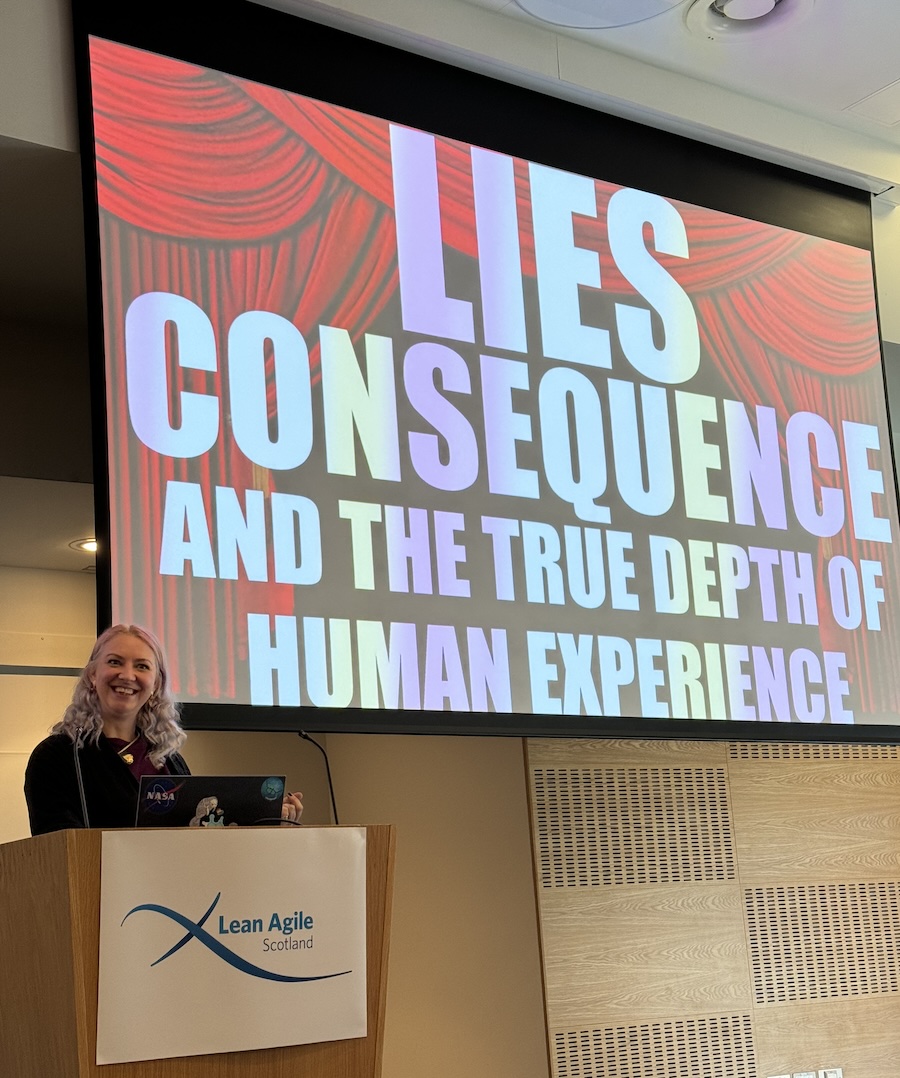
People generally don’t react well to change. They resist it on an emotional level. So to overcome that we need to lower barriers and make it worth their while. People need to be seen, heard and respected. That chimes with what Marcel had in his ethics framework.
But the problem can be even deeper. What you said is not the same as what I understood. She used a great example. We were each asked to “draw food”. We did it on our own and then (without looking) had to guess what our neighbour had drawn. Unsurprisingly, it wasn’t easy to find people who were on the exact same wavelength! So how could we expect that everyone thinks of the same thing when we say “agile”.
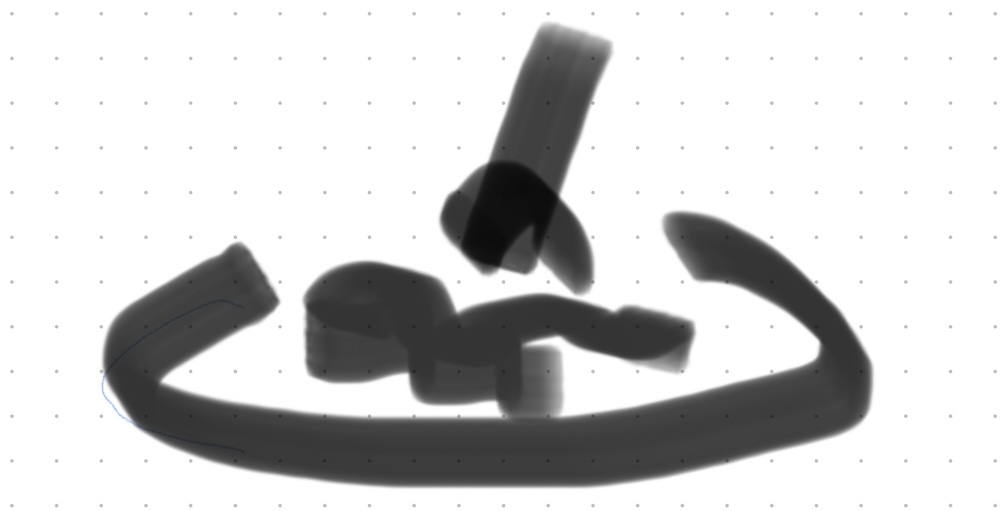
Agile Architecture
Or “architecture” for that matter! Shedzad put it kind of like this (I am paraphrasing):
if you ask a product owner, a delivery lead and a tech lead about the architecture of the system they are working on, you’ll probably get at least 4 answers
He promoted an evolutionary architecture that’s all about making sure that we design systems as problems emerge rather than doing everything all upfront. To do that, architecture has to be easily changed and easily communicated. And he also mentioned that change challenges you emotionally.
I think Nick said it best in his talk about independent value streams: good architecture needs to be communicated without all the irrelevant technical details, it needs collaboration and understanding across different parts of an organisation. There’s that theme of difficulty of ensuring that people are aligned again.
Talking of alignment, I was really grateful to Cansel talking about OKRs based on a sticker we both saw at Agile Manchester and I’ve got on my laptop now.
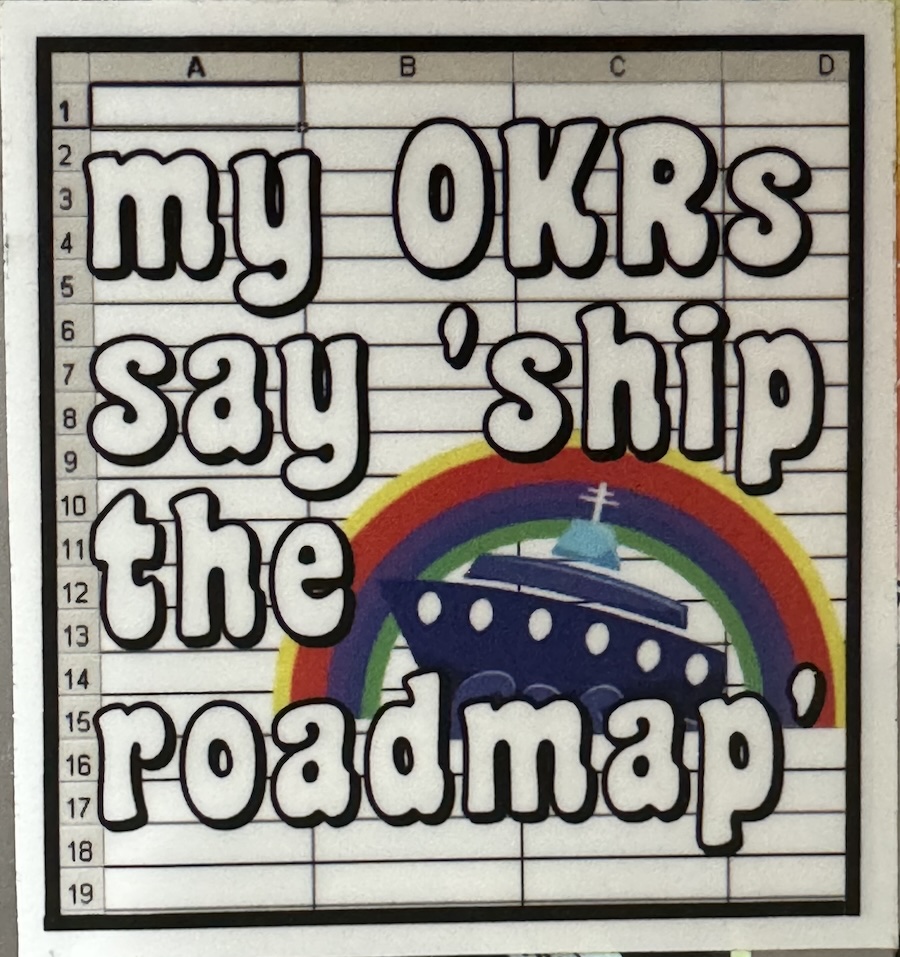
OKRs aren’t KPIs. They are means off communicating strategy and as such need to be driven by outcomes. Not outputs. The most insightful comment for me was that if a particular project (output) is an OKR or target, then we’re fixed on doing that project. Even if it is actually the wrong thing to do. OKR stands for Objectives and Key Results. Not Outputs and Key Performance Indicators. But maybe that’s another example of “drawing food”.
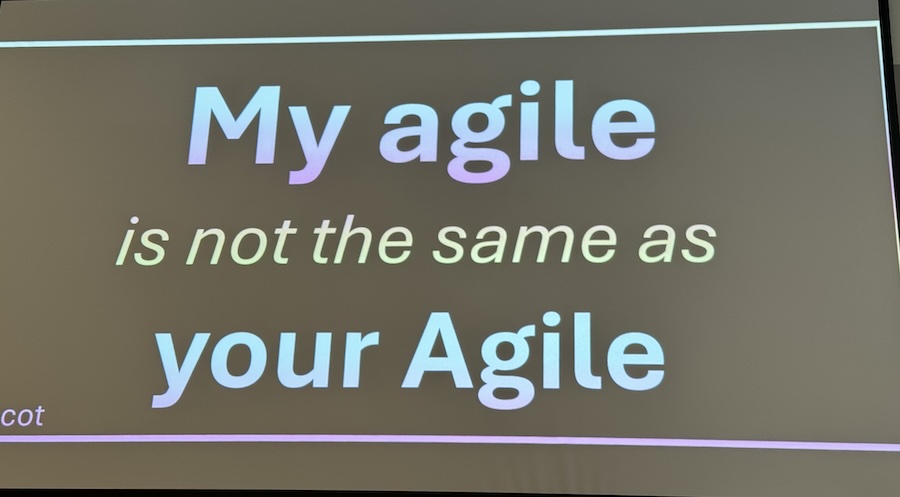
When a strategy is well communicated and aligned, it is so much easier for people to create a good flow of work, where they act without waiting for decisions, blocking each other and generally banging their heads against the wall. Talking of flow, I really liked Sathpal’s talk about “being in a flow state”. See, flow of work isn’t something that needs to be looked at on a team level, it’s about being in the zone, in the right state of mind. Who hasn’t done a days of work and at the end of it felt they’ve achieved nothing. Who hasn’t spent weeks being demotivated and not looking forward to a days of work because it’s frustrating or difficult. We all have been there! If not, please tell me your secret. I really appreciated Sathpal showing vulnerability there be relating a personal story of being out of the flow and how he got back in it.
One thing that really resonated with me is a book title:
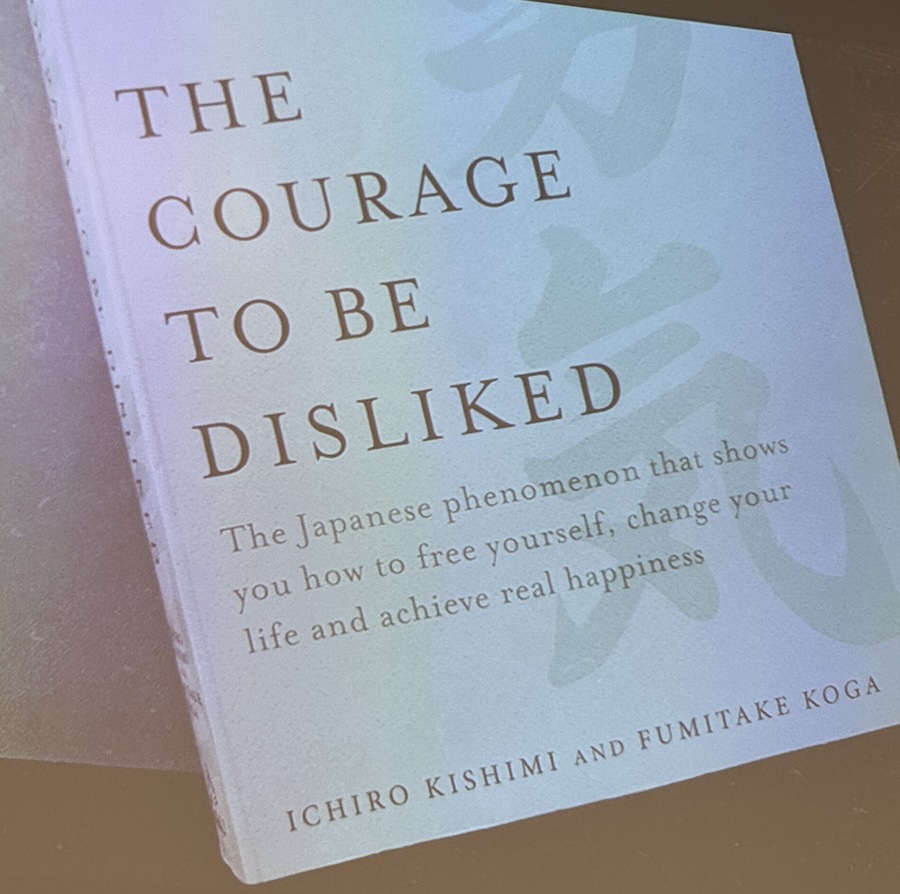
My takeaway there was that it is ok to not please everyone, to look after yourself. Personally, I think this is connected to Psychological Safety and how we work together. If we’re in a place where it is ok to take risks, which can mean saying or doing something that people don’t like, without getting instant blowback, that’s setting a good environment to be able to work effectively. We need to accept that we’re not going to please everyone all the time, but that’s ok! But to sustain that, we’re back to good communication and social skills!
Sustainability again!
I’d like to finish up this piece, by going back to sustainability. And this time I’m using sustainability in that environmental crisis that we’re all so familiar with. There’s a few facts that I picked up on from Sarah’s keynote and Maryse and Jo’s workshop:
- $26bn of cloud compute cost was wasted in 2021 alone
- Cloud compute costs as much as the GDP of Sweden
- In on-prem the utilisation is only 17% - no, not 17% wasted, only 17% of the compute power is actually used
- We’ve only got 5 years to reduce our carbon emissions by 40% otherwise, we’ve got no chance
- Sustainability isn’t just about carbon
- We currently have enough clothes in circulation to clothe 6 generations over
If we want to look the next generation in the eye, it is time to do something about it. I liked Sarah’s quote:
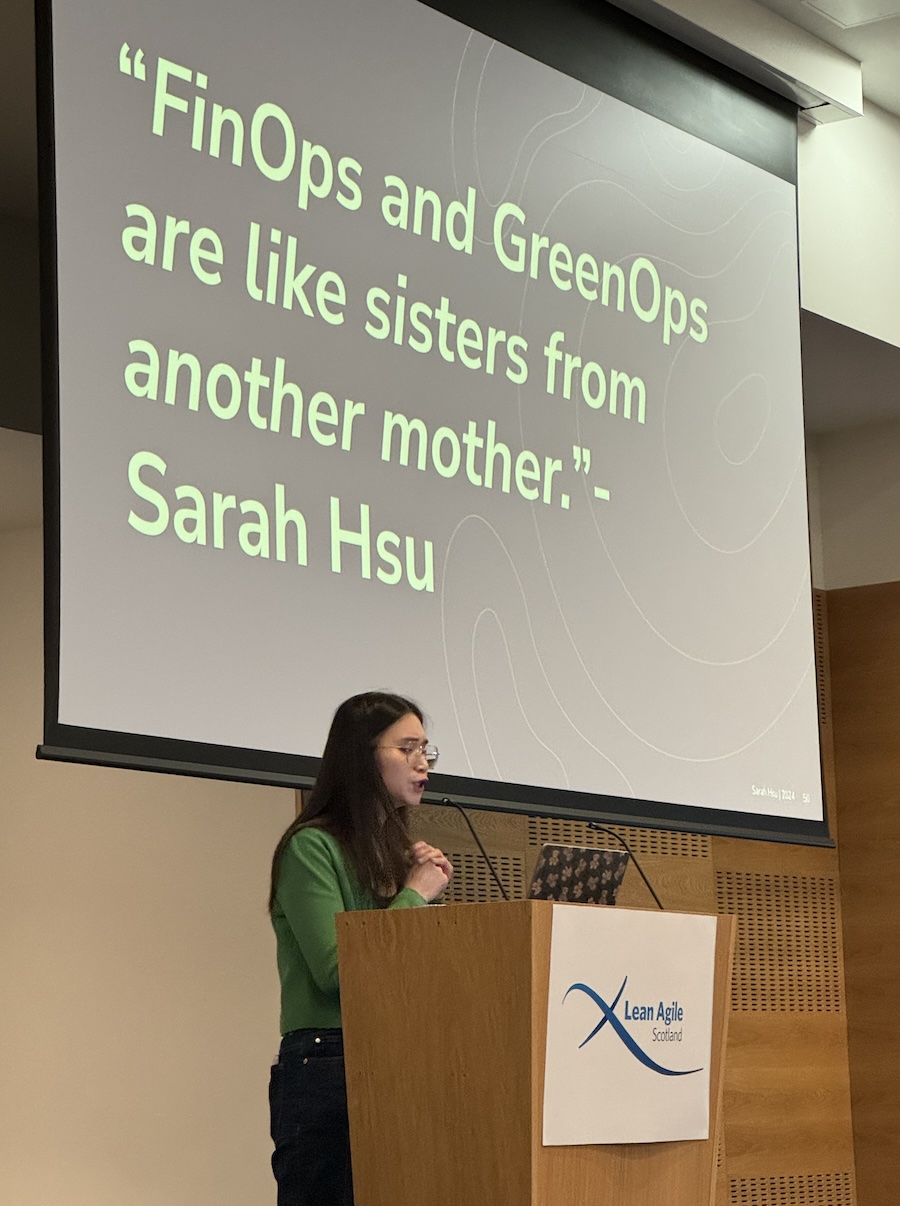
GreenOps is all about creating metrics and tooling that allow us to measure the impact on sustainability. It is not about greenwashing, but about really thinking about whether something is needed?
How many of us know how many nodes, virtual machines or containers we’re running. And how many of those we keep running on the off-chance that somebody else might need them. How many features do we build without knowing how many customers need them?
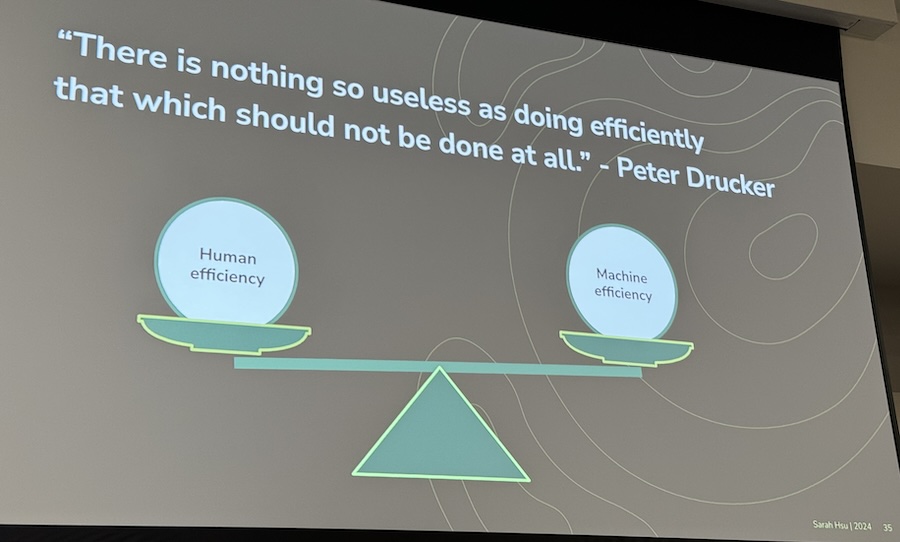
Sarah added
and how many of those servers do we not switch off because we are worried they might not come back up again?
So at the very end of the conference, when Maryse and Jo ran their sustainability workshop, we asked ourselves
What sustainability metrics can we put in place?
Doesn’t need to be big, doesn’t need to be difficult.
Here’s mine:
- How many miles do we travel as a company?
- How many minutes do we spend on online meetings?
We spent some time discussing in small groups, and we thought that these metrics might be very useful to surface, but a bit worried that they might be counter-productive. Do we want to encourage more and more online meetings? Do we want to reduce getting together face-to-face to effectively align?
Sustainability is not just about the climate crisis, but we need to think beyond. Do we really need to grow our energy usage? Do we need to provide more products that need to end up in landfills quicker so that we can shift more of the latest models? Is it wise to use up rare earth metals?
These are the big questions, but as companies and individuals these questions may well be too big to tackle. So let’s be agile. Small steps are better than no steps. Let’s implement some metrics, let’s see what we learn. But let’s not just leave it…
And My Talk
Oh yes, I did a talk too. That was good fun, even though the session was very cosy (read not that popular). Maybe I need to think about how I am communicating application security, I tried to make it clickbaity but I’m not sure how deep the interest in application security is at an agile conference or agile at a security one.
Tags agile conference lean-agile-scotland sustainabilityIf you'd like to find more of my writing, why not follow me on Bluesky or Mastodon?